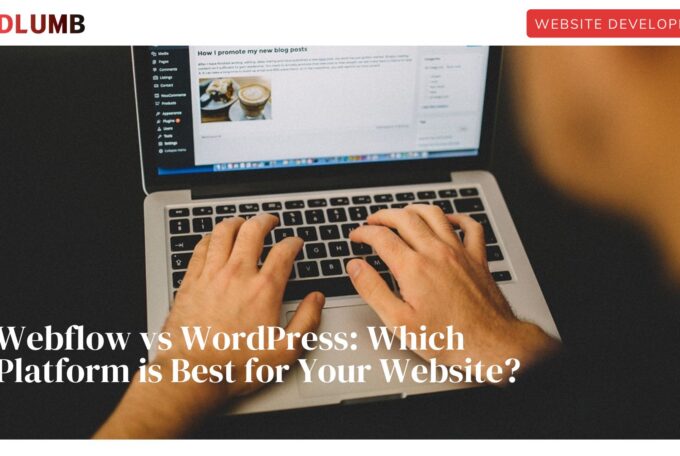Choosing between a static and dynamic website can significantly impact business operations, user experience, and long-term maintenance costs. This decision becomes increasingly important as businesses aim to establish a strong online presence while managing resources effectively. The fundamental differences between these two website types affect everything from content management to server requirements.
Comparison Overview
| Criteria | Static Websites | Dynamic Websites |
| Definition | Pre-built content served as-is to users without server processing | Content generated in real-time using server-side processing |
| Performance | Faster load times; no database queries | May experience slower load times due to server-side processing |
| Security | More secure; minimal attack surface | Increased vulnerability requires robust security measures |
| Cost | Lower hosting and maintenance costs | Higher development costs; more complex infrastructure |
| Content Management | Manual HTML updates; limited scalability | Database-driven CMS; easy updates and scalability |
| Functionality | Basic functionality; limited interactivity | Supports complex features and interactivity |
| User Experience | Identical experience for all users | Personalized experiences based on user data |
| Common Use Cases | Portfolios, brochure sites, documentation, landing pages | E-commerce, social media, news sites, business tools |
| Development Time | Shorter initial setup | Longer development cycle |
| Technical Expertise | Basic web technologies | Advanced programming skills required |
| Maintenance Complexity | Simple but manual | Complex but automated |
| Scalability | Challenges with large-scale management | Superior scalability with efficient content handling |
| When to Choose | Ideal for stable content, quick deployment, and security | Essential for e-commerce, frequent updates, and user interactions |
| Hybrid Approach | Combines static and dynamic features for optimized performance | Allows selective use of server-side processing |
What Are Static Websites?
Static websites represent the fundamental approach to web development, delivering pre-built content directly to users without server-side processing. These websites consist of fixed HTML, CSS, and JavaScript files that remain unchanged until manually modified by a developer.
A static website delivers content exactly as it’s stored on the web server, presenting identical information to every visitor. The pages are coded in HTML, styled with CSS, and may include client-side JavaScript for enhanced functionality. Unlike their dynamic counterparts, static websites don’t rely on database queries or server-side processing to generate content in real-time.

Advantages of Static Websites
Static websites offer several compelling benefits that make them an attractive choice for certain business scenarios:
- Enhanced Performance: Faster load times due to direct content delivery without database queries.
- Improved Security: Reduced vulnerability due to minimal attack surfaces and no database dependencies.
- Cost-Effective: Lower hosting and maintenance costs with simplified infrastructure.
- Reliable Stability: Fewer technical issues due to minimal moving parts.
- SEO-Friendly: Quick indexing by search engines due to consistent content structure.
Disadvantages of Static Websites
While static websites excel in simplicity and performance, they come with inherent limitations. Content updates require manual HTML file modifications, making frequent changes labor-intensive. The lack of real-time content generation restricts interactive features and personalization capabilities. Additionally, managing large-scale websites becomes increasingly complex as the number of pages grows.
Common Use Cases
Static websites prove most effective in specific business scenarios:
- Professional portfolios showcasing work samples.
- Company brochure websites with stable content.
- Documentation sites for products or services.
- Landing pages for marketing campaigns.
- Small business websites with infrequent updates.
[su_service title=”Important” icon=”icon: exclamation-triangle” icon_color=”#00ae27″ size=”20″ class=”ImportntBox”]
These implementations leverage the strengths of static websites while minimizing the impact of their limitations. For businesses prioritizing speed, security, and straightforward content presentation, static websites often provide an optimal solution.
[/su_service]
What Are Dynamic Websites?
Dynamic websites represent the evolution of web development, leveraging server-side processing to deliver personalized, interactive experiences. These sophisticated platforms utilize programming languages like PHP, Python, and Ruby to generate content in real-time, responding to user interactions and preferences.
Dynamic websites employ server-side scripting to generate content on the fly, pulling information from databases and external sources. The content displayed varies based on factors such as user location, time zone, preferences, and past interactions. These websites utilize Content Management Systems (CMS) or databases to store and manage information, enabling real-time updates and personalized experiences.

Advantages of Dynamic Websites
Dynamic websites offer significant benefits that make them ideal for modern business applications:
- Enhanced Functionality: Supports complex features like e-commerce systems and user authentication.
- Real-time Updates: Content can be modified quickly through CMS without technical expertise.
- Personalization: Delivers tailored experiences based on user preferences and behavior.
- Interactive Interface: Enables user engagement through comments, forms, and dynamic content.
- Improved Scalability: Facilitates easy content management and site-wide changes.
Disadvantages of Dynamic Websites
While powerful, dynamic websites come with certain challenges:
- Higher Development Costs: Requires more complex infrastructure and technical expertise.
- Performance Considerations: May experience slower load times due to server-side processing.
- Security Challenges: Increased vulnerability due to database connections.
- Resource Requirements: Demands more robust hosting solutions and maintenance.
Popular Examples
Leading platforms demonstrate the versatility of dynamic websites:
| Platform Type | Examples |
| E-commerce | Amazon, Wayfair |
| Social Media | Facebook, Twitter |
| News Sites | New York Times |
| Entertainment | Netflix |
| Business Tools | HubSpot |
These implementations showcase how dynamic websites can adapt to various business needs while maintaining robust functionality and user engagement.
Key Differences Between Static and Dynamic Websites
Understanding the technical distinctions between static and dynamic websites reveals fundamental differences in their architecture, functionality, and business applications. These differences significantly impact how websites operate and serve their intended purposes.
Content Management
The management of content represents a primary distinction between static and dynamic architectures. Static websites require direct HTML file modifications for updates, while dynamic websites utilize database-driven content management systems. This fundamental difference affects how businesses maintain and update their web presence, with dynamic sites offering centralized control through CMS platforms.

Functionality and Interactivity
Dynamic websites excel in providing interactive features through server-side processing, enabling:
- Real-time content generation based on user inputs.
- Personalized user experiences through data processing.
- Complex functionality like e-commerce systems.
- User authentication and session management.
Development and Maintenance
The development approach varies significantly between these architectures:
| Aspect | Static Websites | Dynamic Websites |
| Development Time | Shorter initial setup | Longer development cycle |
| Technical Expertise | Basic web technologies | Advanced programming skills |
| Maintenance Complexity | Simple but manual | Complex but automated |
| Resource Requirements | Minimal | Substantial |
Performance and Security
Performance characteristics differ markedly between static and dynamic implementations. Static websites typically deliver faster loading times due to pre-built content, while dynamic sites may experience slight delays due to server-side processing.

Security considerations also vary, with static sites presenting fewer vulnerabilities due to their simplified architecture, whereas dynamic websites require robust security measures to protect databases and server-side operations.
Scalability
Dynamic websites offer superior scalability through database-driven content management, enabling businesses to handle growing content volumes efficiently. Static websites, while excellent for smaller applications, face challenges with large-scale content management and frequent updates. The choice between these architectures often depends on anticipated growth and content management requirements.
Choosing the Right Website Type for Your Business
Selecting the appropriate website architecture requires careful evaluation of business objectives, technical capabilities, and resource availability. Organizations must align their choice with both current needs and future growth plans to ensure sustainable digital success.
Factors To Consider
Business leaders must evaluate several critical factors when choosing between static and dynamic website architectures:
- Business Objectives: Long-term goals and scalability requirements.
- Technical Resources: Development expertise and maintenance capabilities are available.
- Content Update Frequency: The frequency of content modifications is required.
- Budget Constraints: Initial development and ongoing maintenance costs.
- User Experience Requirements: Level of interactivity and personalization needed.
When To Choose a Static Website
Static websites prove most beneficial for organizations with stable content and straightforward presentation needs. The implementation of static architecture is particularly advantageous when:
| Business Need | Static Website Benefit |
| Quick Deployment | Faster development cycle |
| Limited Budget | Lower hosting costs |
| Simple Content | Easier maintenance |
| Security Priority | Reduced vulnerability |
When To Opt for a Dynamic Website
Organizations should consider dynamic websites when their business model demands sophisticated functionality and user interaction. Dynamic architecture becomes essential for:
- E-commerce operations requiring real-time inventory management
- Content-heavy platforms with frequent updates
- Businesses needing user authentication systems
- Organizations requiring personalized user experiences
- Platforms managing large-scale content distribution
Hybrid Approaches
Modern web development often employs hybrid solutions, combining static and dynamic elements to maximize benefits while minimizing drawbacks. This approach allows businesses to:
- Utilize static pages for stable content while implementing dynamic features for interactive elements.
- Leverage server-side processing selectively to optimize performance.
- Implement progressive enhancement strategies based on user needs.
- Scale different components independently as business requirements evolve.
[su_service title=”Info” icon=”icon: info-circle” icon_color=”#000″ size=”20″ class=”InfoBox”]
The hybrid model particularly suits organizations transitioning from simple to complex web applications, allowing gradual implementation of dynamic features without a complete system overhaul. This approach enables businesses to maintain optimal performance while adding sophisticated functionality through technologies like JavaScript, PHP, and Python.
[/su_service]
Which Website Type Is Right for Your Business?
Static and dynamic websites each serve distinct business purposes, with their unique advantages making them suitable for different scenarios. Static websites excel in delivering fast, secure, and cost-effective solutions for businesses with stable content needs, while dynamic websites offer powerful features for organizations requiring real-time updates and user interaction. The choice between these options significantly impacts a business’s online success, making it essential to evaluate factors such as content management needs, technical resources, and long-term scalability requirements.
Business leaders must consider their current capabilities alongside future growth plans when selecting a website architecture. Organizations with straightforward presentation needs and limited update requirements often benefit from static websites’ simplicity and reliability.
Companies needing complex functionality, frequent content updates, or user authentication systems typically find dynamic websites more suitable. Modern web development also allows for hybrid approaches, enabling businesses to combine the strengths of both architectures while minimizing their limitations.
Syed Haris Ali is a renowned web developer and designer at REDLUMB, specializing in front-end technologies, with a particular focus on WordPress. Holding a BS in Computer Science, he has successfully delivered over 50 websites across various sectors, providing tailored solutions to meet diverse client needs. With a keen eye for design and a passion for functionality, Haris creates engaging user experiences that elevate brands online.




![How to Make Your Website Show Up on Google [All Steps]](https://redlumb.ae/wp-content/uploads/2024/11/REDLUMB-Template-6-680x456.jpg)
